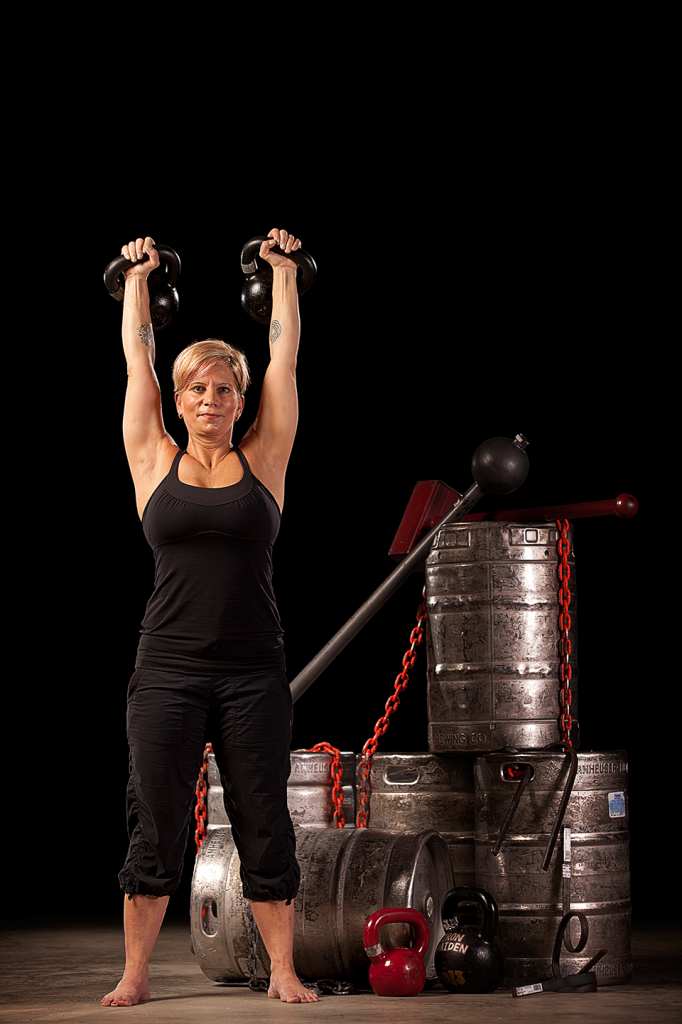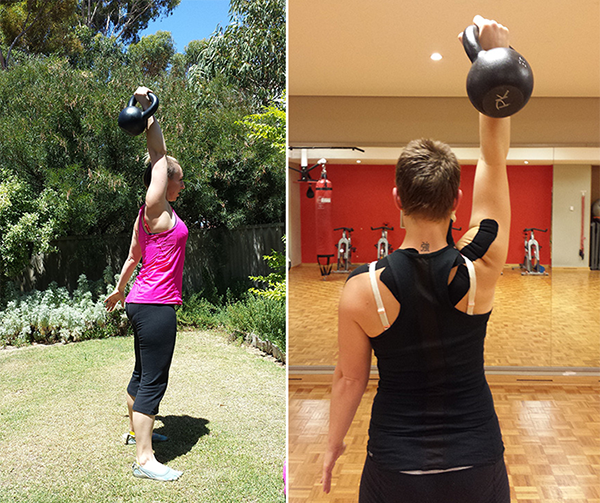
So many kettlebell exercises go overhead.
Some move quickly like the Snatch (top left picture) and Jerk. Some move slowly like the Press (top right picture) and Bent Press. And some are simply just held overhead like the Turkish Get Up and Windmill but every single one of them should look identical in the lockout position.
When the kettlebell is overhead your body should have tension running through it from top to bottom, reaching the top of your movement is not a moment to relax. Keeping your lats activated, your belly and glutes tight, the arm sucked into the shoulder, wrist straight ensures safety and strength.
Breaking down the Overhead Lockout:
The Wrist: When the wrist is in the correct position the muscle in your forearm remains active. Maintaining a straight wrist with knuckles facing the sky can be a challenge for some, especially when using a lighter kettlebell that sits higher on the wrist and presses on bone. If the pressure on the wrist is too much when you are starting out grab some sweatbands and cover the wrist for protection (not for continual use to cushion a kettlebell banging onto your wrist, that is a different issue altogether).
Keeping the wrist straight is essential in reducing injury, the “Broken Wrist” position will eventually lead to exactly that…
I asked fellow RKC and Physiotherapist Craig Soley for a breakdown of the dangers of incorrect wrist position, the following is his response –
“One of the most common mistakes in KB pressing activities is wrist position. So we can be clear, wrist (neutral) extension is described such that if I drew a line from your knuckles along the back of your hand and down your wrist is would be a perfectly straight line. If the wrist is flexed (a less common mistake) the knuckles would be in front of the wrist and forearm. If the wrist is extended then the knuckles would be located behind the bones of the wrist and forearm. Holding the KB in wrist neutral, the load is carried through the joint and held by muscular effort – this is good. In wrist extension, the load is carried on the joint, less muscle effort and the weight is resting upon the bony structures – over time this is bad and it is bad practice.
Why? Think collapsed arches and flat feet, hyperextended knees and hyperlorditic lumbar spines as other examples of resting on your joints. If you continually rest on your joints they will eventually wear out. Also, if you are training, train! Use your muscles to do the work and take the load off your joints! Keeping your wrist neutral trains for function and longevity.”
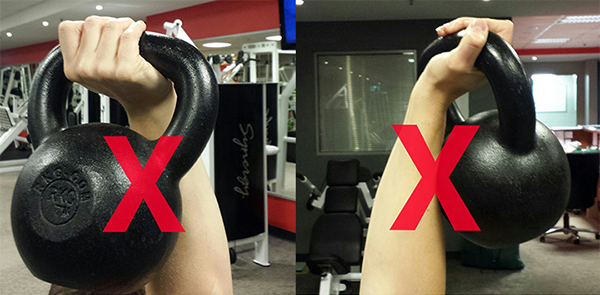
The Elbow: The elbow, as with the wrist, should maintain a straight alignment. The extended arm should run parallel to your head with your bicep inline with your ear. If you are hypermobile through the joint you will need to be more mindful of your movements as they are more likely to sustain injury due to the unstable nature of the joint.
Shoulder/Ear Poisoning: Over and over throughout all of my kettlebell learning I’ve heard the phrase “Your ears are poison to your shoulders”, simply meaning that if you’re overhead and the shoulder is close your ear then you’ve lost all stability and strength from the shoulder girdle being in a shrugged up position. Keep the arm securely in the socket and activate your lats for upper torso strength.
Core/Glutes: If you are planning to conquer The Iron Maiden Challenge (or for the fellas The Beast Tamer Challenge) you know that a good heavy Press comes from strong glutes and having your core locked tight. It is the solid base that stops you from leaking power and maintains control. Finish your lift strong by keeping them all engaged – meaning no disengaging in the middle.
Get moving before going overhead: Always warm up before any workout with your aim to target the muscles that are going to be used. PFE warm-up, Halos with Kettlebell, rotating all joints through their full range of movement.
- Foam Roller on the thoracic spine
- Armbar or Crooked Armbar
- Thoracic Bridging
Always seek out professional help if you are suffering pain in any overhead position.
***
Tabitha Dearle, RKCII based in Perth, Australia, and is Co-owner of Perth Kettlebell School of Strength. She spent the first decade of her working life managing fast food restaurants before making a life-changing decision to become a Personal Trainer. Since then she’s been helping many, from athletes to seniors to children, change their lifestyles to become fitter, healthier and more mobile mostly through using Kettlebells. You can follow her blog at http://tabidrkc.wordpress.com/
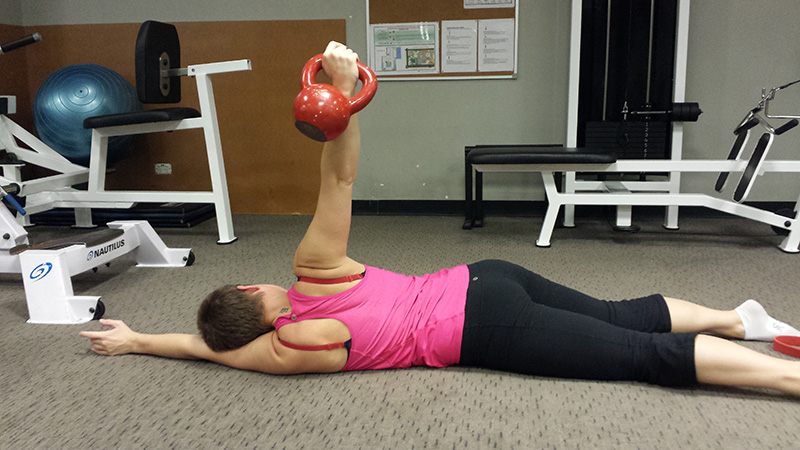
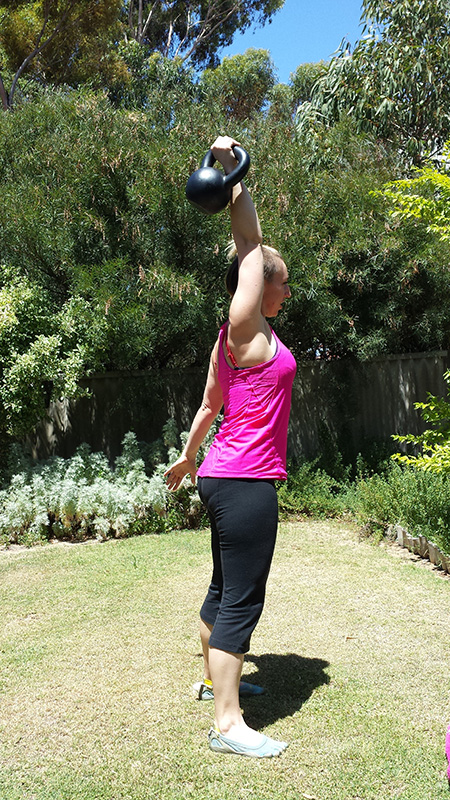
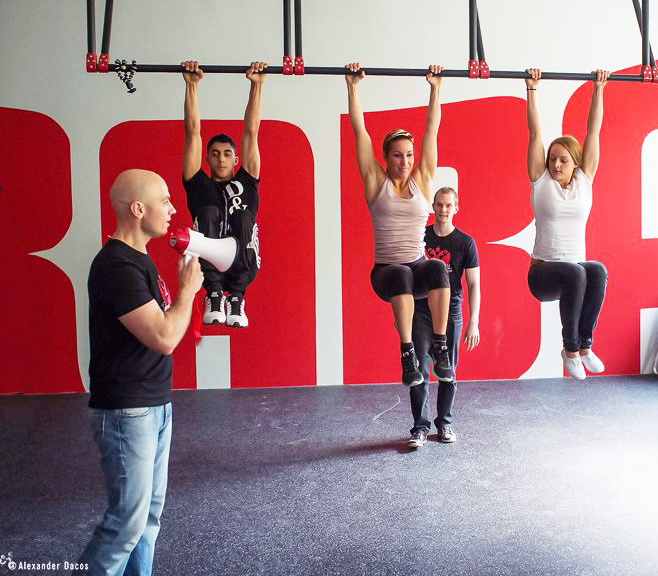

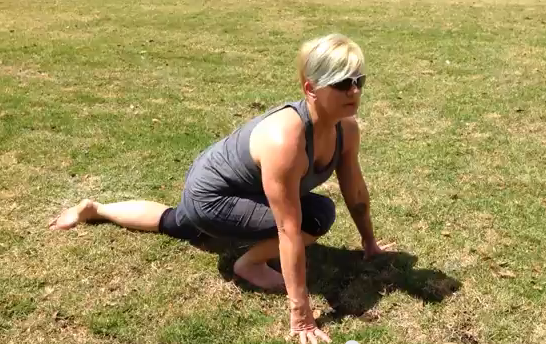 I remember being a newly minted RKC back in 2009. I couldn’t wait to get back and start training clients. I had a head full of knowledge and a heart full of pride and excitement.
I remember being a newly minted RKC back in 2009. I couldn’t wait to get back and start training clients. I had a head full of knowledge and a heart full of pride and excitement.